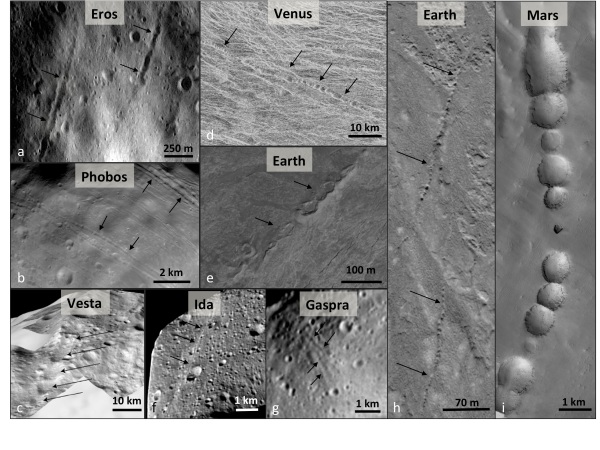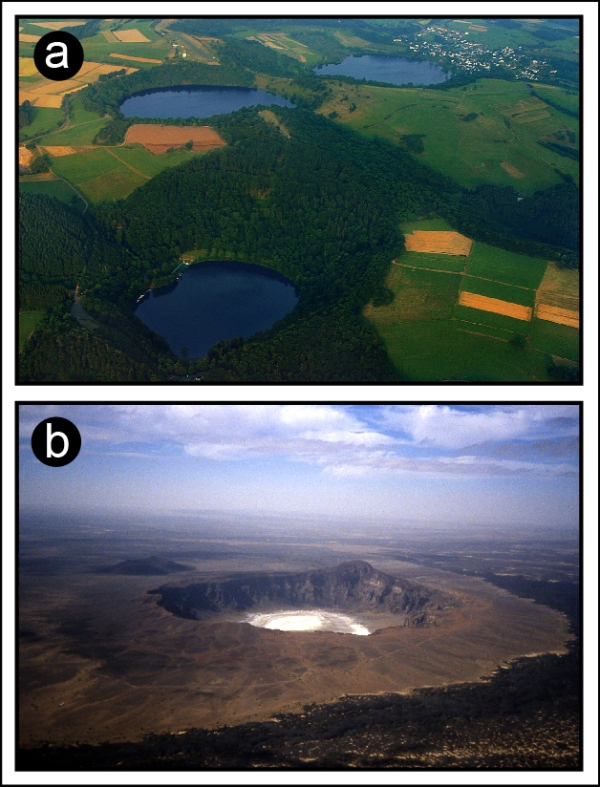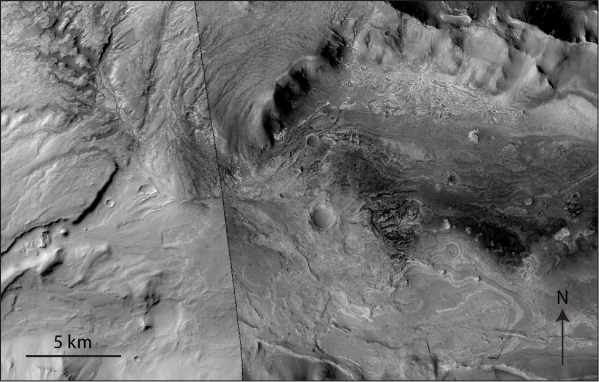Post by Dr. Colin Dundas, U.S. Geological Survey, Astrogeology Science Center
Martian “gullies” are a class of landforms on steep slopes, characterized by an upper alcove and a depositional apron, linked by a channel. On Earth, similar features would likely be termed ravines or alluvial fans. The Martian features usually appear geomorphically fresh, with sharply defined channels and no superposed impact craters. Changes were first detected in Martian gullies over a decade ago, and such observations have become more common as high-resolution repeat image coverage has expanded. This current activity correlates with seasonal frost (which is mostly CO2 on Mars) and has resulted in substantial modification of some gullies, leading to a debate over whether CO2 alone is sufficient to form them without liquid water.

Image 1: Subsection of HiRISE image ESP_023809_1415 (https://www.uahirise.org/ESP_023809_1415) at reduced resolution, providing context and an overview of the gully system. North is up and light is from the upper left.

































